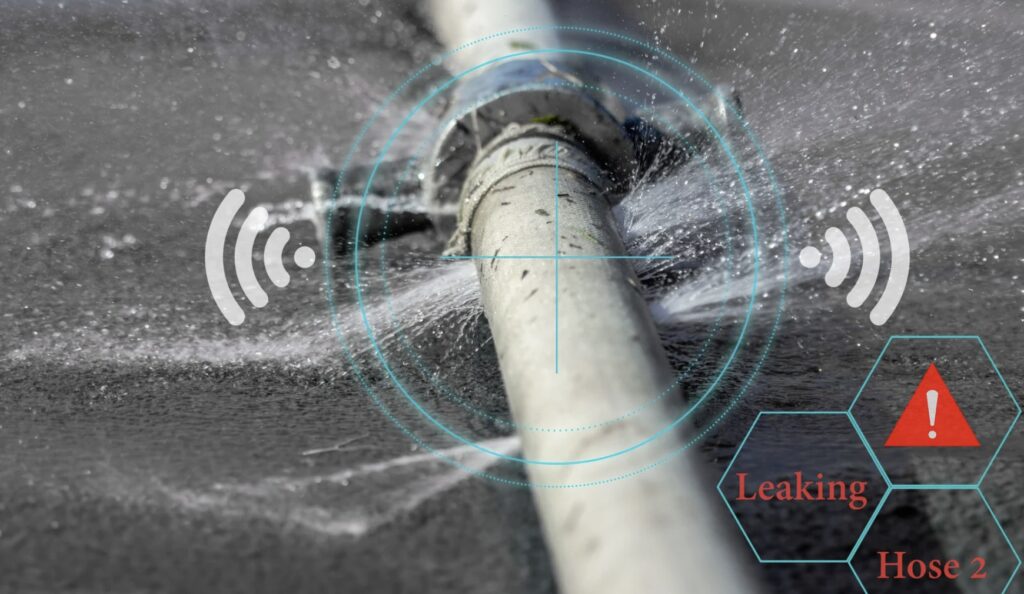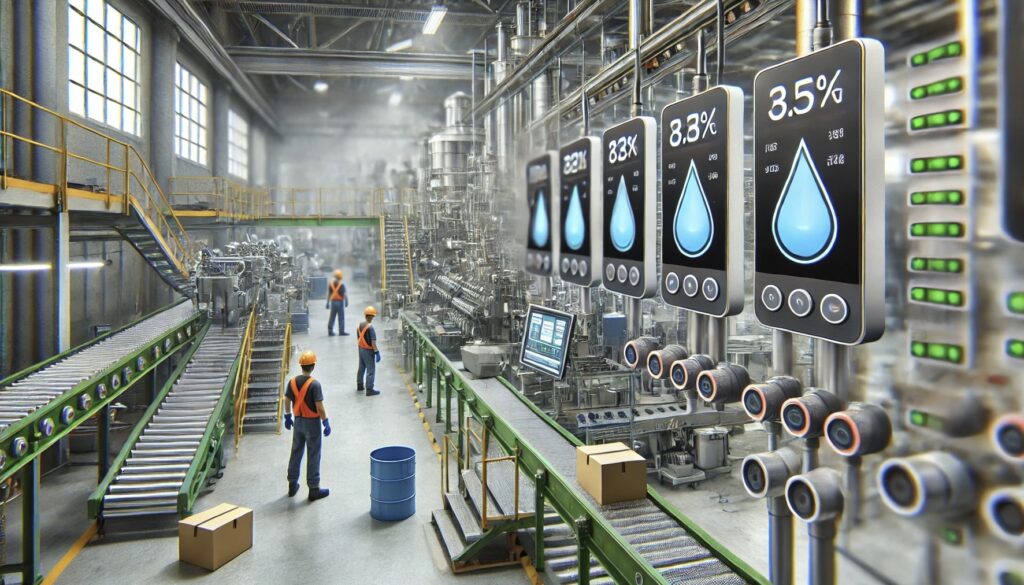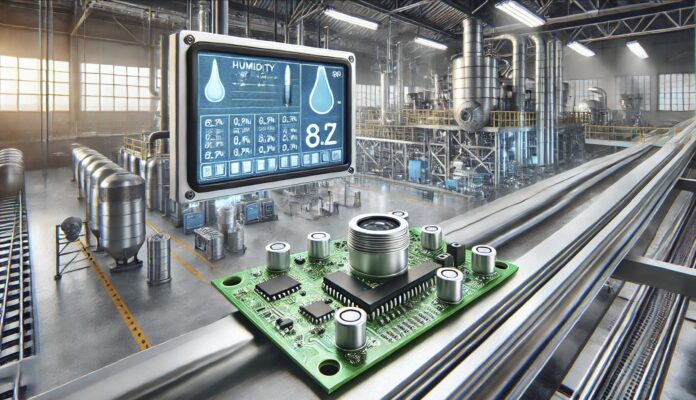Humidity—the measure of water vapor in the air—plays a pivotal role in everything from everyday comfort to high-stakes industrial processes. In most discussions, we refer to relative humidity (RH), which compares the actual water vapor in the air to the maximum amount the air can hold at a given temperature. Monitoring and controlling humidity are crucial in settings like data centers, museums, pharmaceutical manufacturing, and HVAC (Heating, Ventilation, and Air Conditioning) systems. Too much humidity can cause mold growth and material degradation; too little can generate static electricity and dryness that impact both products and human health.
To address these challenges, the market relies on electronic humidity sensors, which offer continuous, reliable measurements. When integrated with automated systems, these sensors can trigger responses to maintain optimal environmental conditions—lowering humidity when it’s too high, for instance, or adding moisture when needed. The result is improved safety, efficiency, and product quality across various industries.
What is a Humidity Sensor and Its Uses?
A humidity sensor is an electronic device designed to measure the amount of moisture in the air. These sensors play a vital role in applications ranging from meteorology and industrial processes to residential HVAC systems. They are commonly used in weather forecasting, agriculture, healthcare (e.g., ventilators), and industrial environments where precise humidity control is essential.

How Electronic Humidity Sensors Work
What Are the Three Types of Humidity Sensors?
- Capacitive Humidity Sensors
These rely on changes in capacitance caused by water vapor adsorbing onto a thin film or polymer. The film is typically sandwiched between two conductive plates (electrodes). As the polymer absorbs moisture, its dielectric constant changes, altering the sensor’s capacitance. This is the most common type of humidity sensor found in consumer devices, as well as many industrial applications, due to its balance of accuracy, cost-effectiveness, and durability. - Resistive Humidity Sensors
Here, the sensor’s electrical resistance shifts with changes in humidity. A salt or polymer layer lies between two electrodes. As the layer interacts with water molecules, the ionic conductivity changes, directly affecting the overall resistance. These sensors are often used in environments where a simpler design and a moderate level of accuracy suffice. - Thermal Conductivity (Psychrometric) Sensors
By comparing the thermal conductivity of humid air with that of a reference (dry) air stream, these sensors can infer moisture levels. This method is more specialized and typically seen in industrial processes or situations requiring high-range humidity measurements. - Optical Sensors
Emerging optical or laser-based sensors use variations in light transmission or absorption at specific wavelengths to detect humidity. Although highly precise, they remain relatively costly and are mostly employed in specialized applications or scientific research.
Among these methods, capacitive sensors dominate the mainstream market because they are robust, have good accuracy ranges, and can integrate seamlessly with digital systems.

What is the Most Accurate Type of Humidity Sensor?
Modern electronic humidity sensors can achieve accuracy from ±1% to ±5% RH, depending on their design and quality. The most accurate type of humidity sensor is typically a laboratory-grade capacitive or chilled mirror dew point hygrometer, capable of reaching ±0.8% RH accuracy or better. These sensors use advanced calibration techniques and high-quality materials to provide ultra-precise measurements, making them ideal for scientific and industrial applications.
Delving Deeper into Capacitive Sensors
A capacitive humidity sensor measures changes in capacitance to estimate how much moisture is in the air. Here’s a more detailed look at the process:
- Sensing Layer
The sensor is built around a hygroscopic (water-attracting) polymer or ceramic dielectric placed between two conductive plates. This material is engineered to absorb and release water molecules quickly and repeatedly without degrading. - Capacitance Shift
The presence of water, which has a high dielectric constant, alters the sensor’s overall capacitance. Higher humidity means more absorbed water, leading to a larger shift in the dielectric constant and, thus, higher capacitance. - Electronic Readout
The sensor’s changing capacitance is converted into an electrical signal—often a voltage or frequency shift—by onboard circuitry. A microcontroller or dedicated sensor interface can then translate that electrical change into a relative humidity value. - Temperature Compensation
Most commercial humidity sensors also measure temperature, using it to adjust their humidity readings. Because air’s ability to hold moisture depends heavily on temperature, factoring this in corrects for many environmental variations.
Soil Humidity Sensor
Soil humidity sensors play a crucial role in agriculture and horticulture by measuring the moisture content in soil. These sensors help farmers and gardeners optimize irrigation schedules, preventing both overwatering and underwatering. Soil humidity sensors are widely used in smart irrigation systems, greenhouse management, and environmental monitoring to ensure optimal plant growth and water conservation.
Accuracy and Influencing Factors
Modern electronic humidity sensors can achieve accuracy from ±1% to ±5% RH, depending on their design and quality. Several factors affect this accuracy:
- Manufacturing Quality
The precision of the polymer layer’s thickness, the purity of materials used, and the consistency of electrode placement all contribute to sensor uniformity. High-end sensors often incorporate meticulous factory calibration to ensure minimal variance between units. - Calibration
Sensors rely on calibration against known references to provide correct humidity readings. These references often involve saturated salt solutions or dew-point generators that produce precisely controlled humidity levels. Any miscalibration or drift in these reference standards can introduce errors. - Environmental Stress
Over time, extreme temperatures, chemical contaminants, dust, and high humidity can degrade the sensing layer, causing sensor drift. In heavy industrial environments or places with airborne pollutants, protective coatings or sensor housings help maintain performance. - Hysteresis
Hysteresis describes how sensor output can differ slightly depending on whether the humidity is rising or falling. This effect is typically small (1–2% RH), but it can impact extremely sensitive applications. - Temperature Dependence
Although most sensors have built-in temperature compensation, large or rapid temperature fluctuations can momentarily skew results, emphasizing the need for stable environmental conditions in precision applications.
Humidity Deutsch
The term “Humidity Deutsch” generally refers to humidity measurement and sensor technologies in German-speaking countries. Germany has a strong reputation for engineering precision instruments, and several leading companies specialize in manufacturing high-accuracy humidity sensors. These sensors are widely used in industrial applications, meteorology, and HVAC systems across Europe.
How Accurate Can They Be?
- Consumer-Grade Devices: In home or office devices (like digital hygrometers), you’ll commonly see accuracy specifications of around ±3% to ±5% RH. These sensors strike a balance between cost and functionality, typically sufficing for general comfort or moderate climate control.
- Industrial and Commercial Sensors: Higher-quality industrial sensors often claim accuracies of ±1% to ±2% RH. They use stricter calibration procedures and better-quality materials, making them suitable for manufacturing plants, storage facilities, or laboratory environments.
- Laboratory-Grade Equipment: In specialized applications (e.g., certain pharmaceuticals or high-precision research), sensors might achieve ±0.8% RH or better. However, these come with higher costs, stricter usage conditions, and often require more frequent recalibration.
It’s important to remember that stated accuracy typically applies over a specified range (e.g., 20–80% RH) at a given temperature. Readings outside these ranges—or in challenging conditions—may have larger errors.
Partnering with Electronics Design Experts: Arshon Technology
Designing a humidity sensor that meets exact specifications for accuracy, responsiveness, and durability is no small feat. This is where partnering with an experienced electronics design firm can be invaluable. Companies like Arshon Technology specialize in custom PCB (Printed Circuit Board) design, sensor integration, and the end-to-end product development processes that bring advanced sensing technologies to life.
- Customized Sensor Integration
Every application has unique requirements—some may need ultra-low power consumption for battery-based devices, while others might emphasize rapid response times in changing humidity environments. Arshon Technology’s engineers work closely with clients to select or design humidity sensors tailored to those specific needs. - Signal Conditioning and Processing
While humidity sensors produce analog changes in capacitance or resistance, modern systems often require digital outputs. Arshon Technology’s expertise in electronics design ensures signal conditioning circuits and analog-to-digital converters (ADCs) are optimally configured, providing consistent, high-resolution humidity readings. - Environmental Robustness
Whether your device must withstand harsh industrial pollutants or wide temperature swings, Arshon Technology can guide material selection and PCB layout strategies, helping to protect the sensor elements and maintain long-term accuracy. - Prototype to Production
From proof-of-concept prototypes to full-scale manufacturing, Arshon Technology can assist in validating sensor accuracy, reliability, and compliance with relevant industry standards (such as ISO or FDA regulations in healthcare applications). This seamless transition from development to production ensures the final product is both practical and market-ready.
By leveraging Arshon Technology’s extensive experience, product developers can focus on overall system functionality—knowing that their humidity-sensing components are being designed and validated to match the exact performance requirements of their target application.
Calibration and Maintenance
Even the best-designed humidity sensors benefit from periodic recalibration, especially in demanding environments. Over time, the sensing element may experience drift due to aging materials or environmental exposure. Calibration routines can be performed by:
- Single-Point Calibration
Exposing the sensor to a known humidity level—such as 75% RH using a saturated sodium chloride solution—and then adjusting its output to match that reference. - Multi-Point Calibration
Testing the sensor at multiple humidity levels (e.g., 33%, 75%, and 90% RH) to refine the sensor’s entire performance curve. This is particularly useful for critical industrial or laboratory applications. - Traceable Standards
Using labs or references traceable to national or international standards (like NIST in the U.S.) ensures that calibrated sensors will provide readings recognized for their validity in regulatory or quality-control processes.
Regular maintenance, such as cleaning off dust and replacing protective filters, further ensures stable performance over a product’s lifespan.
Practical Considerations in Real-World Use
Despite significant advancements, humidity sensors face certain limitations:
- Response Time
Depending on the sensor’s design and the environment’s airflow, it can take seconds to minutes for the sensor to equilibrate with changing humidity levels. - Condensation Issues
In high-humidity or rapidly cooling environments, condensation can form on the sensor, temporarily skewing results or damaging fragile sensing elements. - Location
Placing a sensor too close to machinery, vents, or external doors can create localized microclimates, reducing measurement accuracy. - Power Constraints
Remote or battery-operated systems must consider the sensor’s energy consumption. Engineers often design low-power modes to preserve battery life without compromising data quality.
Conclusion
Electronic humidity sensors have transformed how we manage indoor climates, protect valuable artifacts, and maintain precise conditions in manufacturing and research settings. Capacitive sensors dominate the field due to their robust performance, good accuracy, and scalability. Depending on quality and design, these sensors commonly achieve accuracies ranging from ±1% to ±5% RH, with laboratory-grade models offering even tighter tolerances—provided they receive appropriate calibration and maintenance.
In this ecosystem, Arshon Technology stands out as a versatile partner capable of providing the essential electronics design expertise that underpins reliable humidity-sensing systems. From selecting the right sensor technology to designing rugged PCBs, integrating signal conditioning circuits, and guiding products from prototype through production, Arshon Technology ensures that your humidity measurement solution meets exact specifications for accuracy and durability.
Ultimately, understanding the operational principles, accuracy limits, and maintenance needs of humidity sensors is crucial for leveraging their full potential. Whether you’re fine-tuning an industrial process, safeguarding irreplaceable museum artifacts, or simply seeking consistent comfort in a residential setting, well-designed and precisely calibrated humidity sensors—supported by expert electronics engineering—can help you achieve the ideal environment for your specific needs.
